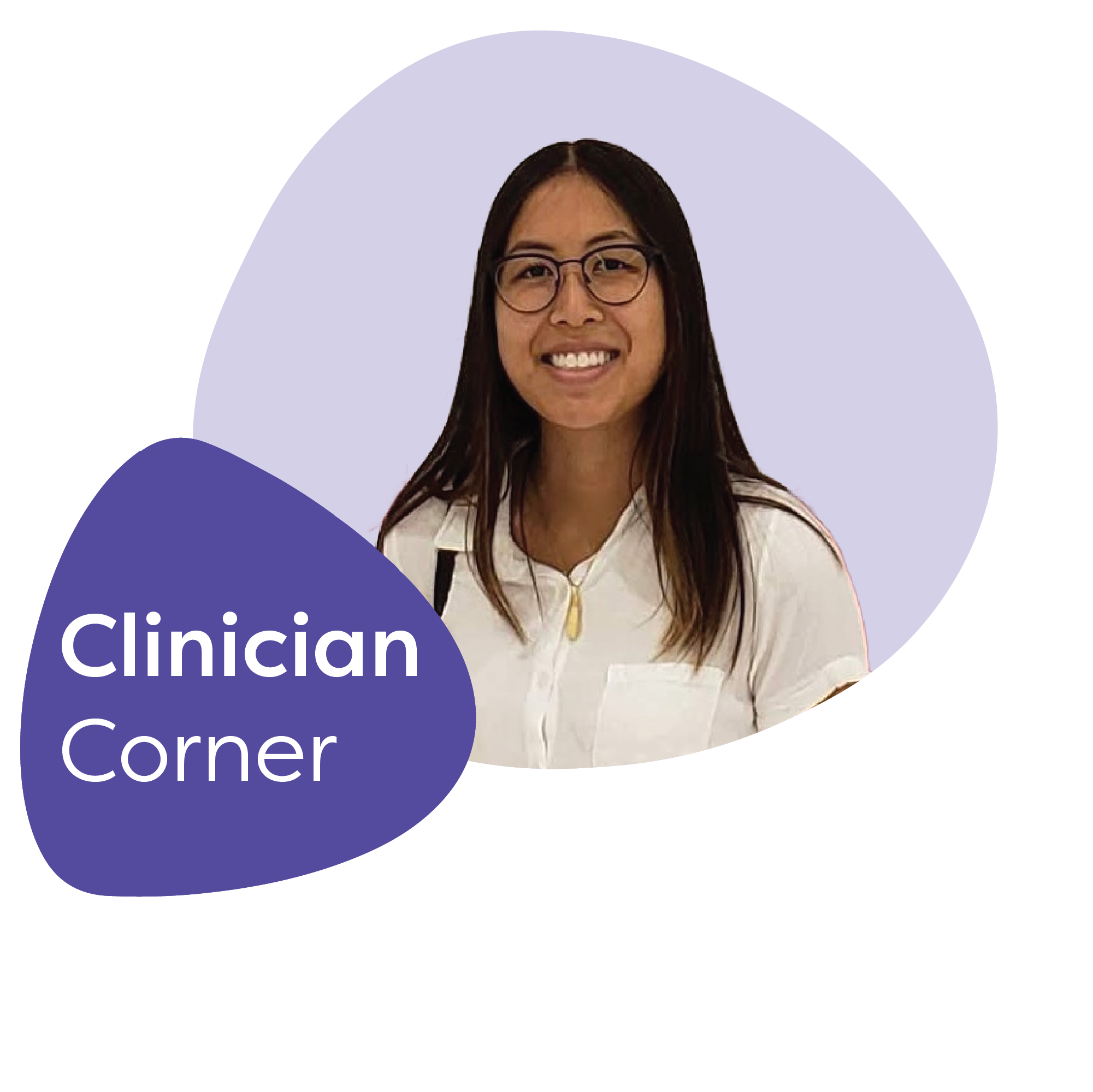Iris clinicians are at the heart of what makes our organization such a special place to work. That’s why we’re turning the spotlight on the amazing work they’re doing every day. This month, we’re sitting down to talk with Veronica Im, an LCSW practicing in California.
Q. How did you find Iris and decide you wanted to be an Iris provider?
A: It started with the pandemic. The pandemic made me think about how I can make sure I can do my work without putting my life at risk at the same time. I was looking more into telehealth, and I noticed that with the pandemic, it had shifted. There has been a lot of new technology that helps make telehealth work.
I thought being able to do this work in the comfort of my own home made more sense for me and allowed me to do the work I wanted to do without having to put myself out or make things more stressful for me, given everything that has gone on in the last few years.
Iris was one of the telehealth companies I was interested in working for. I decided to look more into it and applied, and that’s how I got to where I am now with Iris.
Q. What does a typical day as an Iris Telehealth provider look like for you?
A: I’m primarily doing intake assessments with clients seeking any kind of mental health services, whether it be therapy, psychiatry, case management, rehabilitation, or even substance use recovery services. I am one of the first clinicians they meet with. I gather everything from information about their past mental health history to how they’re doing now. Then, I make clinical assessments based on what I think might be the most appropriate for them, and being that I’m working with a county clinic, they tend to take more severely mentally ill patients. I have to differentiate who has severe symptoms or mild to moderate symptoms. Those I feel have severe symptoms qualify for care at this clinic. If they have mild to moderate symptoms, I refer them to their health plan, primary care physician, or another avenue to get mental health services. I’m that point clinician who guides them where they need to go.
I also do individual therapy. However, that tends to be the smaller portion because most of my work is intake assessments, which take more time. The clinic sets aside three hours for assessment, and they schedule individual therapy in between. I see anywhere between four to seven clients for individual therapy every week. For intake assessment, I’ll probably see between five to 10 people, depending on the schedule.
Then another thing I do within my role is a monthly video check-in with clients in the counties that are conserved. These would be the clients living in places like a board in care or an inpatient facility. They themselves aren’t able to make decisions on their own related to their finances or their healthcare. I do monthly video check-ins to see how they’re doing if their needs are met, how they’re managing their day-to-day, and the progress they make towards independence.
Q. How do you foster connection with patients virtually?
A: A part of what helps with connection is being there to listen to what’s going on in the present moment. As much as it’s nice to have someone you can meet with in person, for me, as long as I can maintain eye contact as much as I can, ask questions about how they’re doing, and reflect back on how they’re feeling to get a sense of what’s going on has helped foster that connection with clients. It shows with the clients I’ve met over the last year.
Often these clients haven’t really been in the mental health system. They’ve never seen a therapist or had this type of interaction with anyone before. Even doing sessions on the computer, even if it’s strange for them, it’s still someone who is listening and being there for them in a way they haven’t had support before. I try to show that I’m here, even though I’m not technically there. I think the clients see that.
Q. As a healthcare professional, how do you manage work-life balance?
A: Work-life balance, at least for me, is ongoing. It’s not set in stone. Having worked with Iris over the last year, I have found that work-life balance. It’s partially why I wanted to go into telehealth. In previous positions, it’s been challenging to manage self-care and find time for myself, my family, and other people in my life. Here, that’s something I’ve been able to manage because I’m not commuting anymore or worrying about getting home at a certain hour. It gives me time to separate work and home life.
In the position I had before Iris, I was out in the field every day. I was seeing clients in their homes, which also ate into my day. I felt like shifting from seeing clients at their homes and trying to find the time to do my notes and documentation to this job where I’ve been able to meet someone over telehealth, quickly document, and not have to spend an exhausting amount of time figuring out how to fit everything in one day has helped. Iris has been good about helping me manage that so far.
Q. What is the most rewarding part of your job?
A: Other than being able to manage work-life balance, the biggest thing I’ve found rewarding is working with the clients in Tehama county. Before this job, I didn’t realize that so many rural areas of California or other parts of the state don’t have a lot of mental health services. Over the last year, I’ve learned that we are really needed in these areas. To be one of the clinicians who can help clients who have not really had mental health services before or who’ve been waiting forever to get mental health services, has been great.
Q. What do you love about working with Iris?
A: Being supported by staff has been amazing and maintaining a work-life balance. That’s what a lot of us strive for overall. I’ve found that here within Iris. I do a lot of work, and there are times when it is busy, but I don’t feel like I’m to the point of being overstressed, overworked, or burned out. There is this sense of being able to relax at the end of the day, and I don’t have to worry about all these other external factors that you would have in a job that is in person or requires you to drive. I definitely like being able to have that balance.
The staff I have worked with at Iris, for example, like David Mariano and Lauren Katz, have been really supportive in advocating for whatever I need. They check in with me once in a while to make sure that I’m continuing to be supported and that I’m happy with Iris. I appreciate that because it shows they care about the well-being of the clinicians here. There are a lot of organizations that don’t always prioritize clinicians. Iris does that, which I really enjoy.
Q. Why do you think telepsychiatry is important to the future of mental healthcare?
A: Telepsychiatry is very important to the future of mental healthcare because it’s becoming more accessible to communities that cannot get care in person. For example, many clients really want mental health services, but what prevents them from getting that care is transportation, getting to the clinics, finding an appointment, and trying to balance that. Many people out there need therapy but don’t have the time to go somewhere for a therapy appointment. Telehealth, in general, is the future. You get to meet with a clinician without having to leave the comfort of your home or having to be somewhere else.
Telehealth makes things a lot quicker and a lot more accessible. As someone who has utilized telehealth in the past, it is very beneficial because I work full time, and it can be hard to find time to sit down and talk with someone about whatever’s going on. With telehealth, at least in my experience, providers have always been flexible with the times you can meet. It makes it easier to work on what you’re going through when you’re ready or have the chance to.
Q. How does teletherapy compare to in-person care?
A: When comparing teletherapy to in-person care, there are certain differences. Of course, you have the aspect of someone being there with you in a room physically, compared to staring at someone on the screen. That’s a major difference. Outside of that, having worked in telehealth, I don’t see much of a difference because, at the end of the day, you’re still getting the same quality level of care you would receive if you met someone in person. The therapists have the same level of education and experience and can bring in their compassion and expertise through video. Outside of being physically in the room with someone, I’d say the quality of care would be the same.
Q. What advice would you give someone new to teletherapy?
A: If you’re practicing teletherapy for the first time, the most important thing is learning to make eye contact with the camera. With teletherapy, it might feel awkward at times. It’s not something that everyone’s used to until down the line. Of course, people will become more used to it, but being able to maintain that eye contact with the camera means that you’re looking at the client. Our eyes sometimes shift when we’re looking at a screen and we’re looking around. But it’s one of the things that even clients have given me advice about in the past. They’ll say, “I want to feel like you’re looking at me compared to looking down or around.”
I took that advice to heart. When I meet with clients, I always try to make sure that I’m looking at the camera even though I’m not necessarily looking at them, but I give them that warning that once in a while, I might look offscreen because I’m looking at you instead of looking at the camera. That’s my biggest advice. Otherwise, being able to practice the format of looking at a computer screen doing therapy is probably the only other advice I would give. Overall, I think most clinicians would do fine.
At Iris, we believe our providers should be respected, valued, and applauded for the work they do, and we couldn’t be more proud to say, “thank you” to our very own Veronica Im. If you’d like to learn more about working for Iris Telehealth, contact us today.



